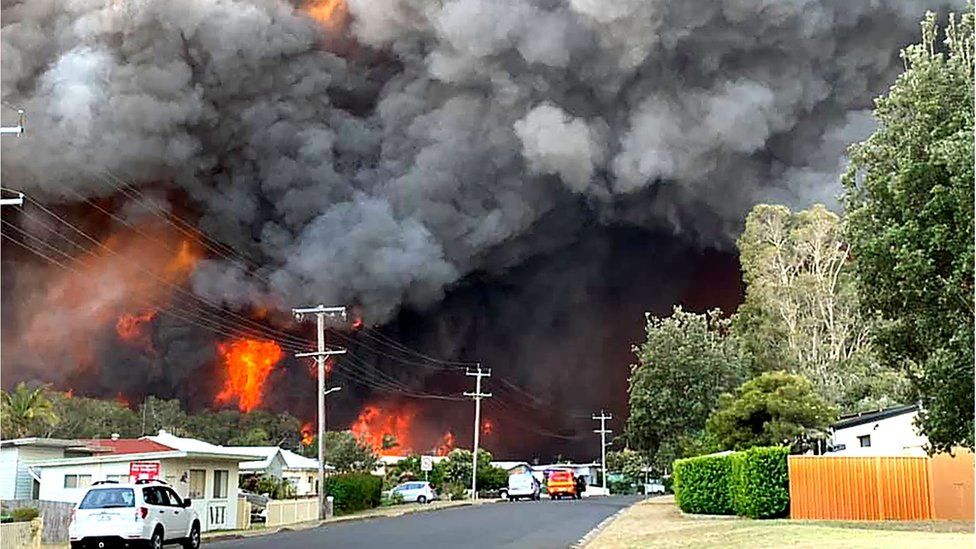Debunking BAL Reports: A Guide to Understanding Your Home's Bushfire Danger
Debunking BAL Reports: A Guide to Understanding Your Home's Bushfire Danger
Blog Article
Ensuring Bush Fire Protection Through Correct BAL Report Evaluation
In the realm of bush fire protection, the meticulous evaluation of Bushfire Strike Degree (BAL) records stands as a keystone for guarding homes against the disastrous effect of wildfires. With environmental elements and residential property attributes playing considerable duties in establishing the degree of danger, a complete understanding of BAL scores becomes important. However, the actual significance exists not just in comprehending these records however in analyzing them effectively to create customized fire protection approaches. By delving right into the significance of BAL record analysis, we reveal a realm where educated decisions pave the course towards bolstering residential property safety and strength in fire-prone regions.
Recognizing Bushfire Attack Level (BAL)
In the world of bushfire defense, understanding the Bushfire Assault Level (BAL) is paramount for ensuring reliable reduction methods. Comprehending the BAL rating of a home is important for home policymakers, contractors, and proprietors to carry out suitable procedures to protect versus bushfire dangers.

Importance of BAL Record Evaluation
A vital facet in bushfire defense preparation includes the complete evaluation of BAL reports to evaluate the potential threats and establish ideal reduction techniques. BAL reports provide crucial details about the potential influence of bushfires on a property based upon different elements such as vegetation kind, distance to potential fire threats, and slope of the land. Assessing these records with precision is extremely important in creating efficient bushfire protection procedures tailored to the specific danger profile of a building.
Carrying Out Fire Defense Procedures
Executing efficient fire defense measures is important for securing homes in bushfire-prone locations. This entails clearing flammable greenery, such as dry leaves and branches, within a specific span of the property.
Furthermore, having a appropriate and well-maintained water supply, such as a tank or swimming pool, can aid firemans in their initiatives to secure the residential property. It is very important to have a clear emptying plan in position and to make certain that all homeowners are acquainted with the procedures. Additionally, having firefighting devices easily available, such as hoses and fire extinguishers, can assist in taking on little spot fires prior to they intensify. In general, implementing a mix of these fire security measures can dramatically boost the possibilities of safeguarding residential or commercial properties throughout bushfire events.
Mitigating Risks in Fire-Prone Locations
To fortify homes versus bushfire threats, a calculated concentrate on mitigating dangers in fire-prone locations is vital. Mitigating threats in fire-prone locations includes a comprehensive method that incorporates various steps to minimize the chance and impact of bushfires. One vital facet of risk mitigation is preserving defensible room around homes by getting rid of combustible vegetation, guaranteeing appropriate spacing in between frameworks and trees, and employing fire-resistant landscaping methods. In addition, applying ember-proofing measures such as installing metal mesh screens on windows and covering roofing system tooth click resources cavities can assist protect against coal attacks and reduce the threat of spot fires.
Moreover, building or retrofitting buildings with fireproof products and making sure proper maintenance of roof coverings, rain gutters, and outside cladding can considerably enhance the residential property's durability to bushfires. Establishing and exercising a bushfire emergency situation plan with all occupants, consisting of emptying procedures and interaction techniques, is additionally crucial in mitigating risks properly. By embracing a proactive technique to run the risk of reduction in fire-prone areas, property proprietors can better shield their assets and enhance general bushfire readiness.
Ensuring Building Safety And Security and Strength
Ensuring the safety and security and strength of properties in fire-prone locations requires a steadfast dedication to durable safety nets and tactical preparation. Building safety and security begins with applying effective procedures to lower fire risks. This consists of keeping a defensible space around the residential property by clearing flammable greenery, guaranteeing correct maintenance of roofing systems and rain gutters, and using fire-resistant building products. Routine upkeep of firefighting tools, such as hoses and lawn sprinkler systems, is likewise vital to home durability.
Resilience, on the various other hand, involves the capacity of a home to withstand and recuperate from a bushfire. By proactively dealing with these facets, residential or commercial property proprietors can much better secure their assets and liked ones from the threat of bushfires.
Final Thought
To conclude, making sure bushfire defense through appropriate BAL record analysis is vital for understanding the level of threat posed by bushfires and executing essential fire protection steps. By minimizing risks in fire-prone areas and making sure residential or commercial property security and published here strength, individuals and neighborhoods can much better plan for and respond to bushfire events. It is imperative to prioritize fire precaution to secure lives and building in these high-risk environments.
In the realm of bush fire protection, the meticulous evaluation of Bushfire Attack Degree (BAL) records stands as a foundation for securing homes against the terrible effect of wildfires (BAL Report). Comprehending the BAL score of a use this link building is critical for residential or commercial property builders, policymakers, and owners to carry out suitable steps to safeguard versus bushfire dangers

BAL records give crucial info regarding the prospective influence of bushfires on a building based on various elements such as plants kind, range to possible fire threats, and incline of the land (BAL Report). Overall, implementing a combination of these fire protection steps can considerably boost the possibilities of securing residential properties throughout bushfire events
Report this page